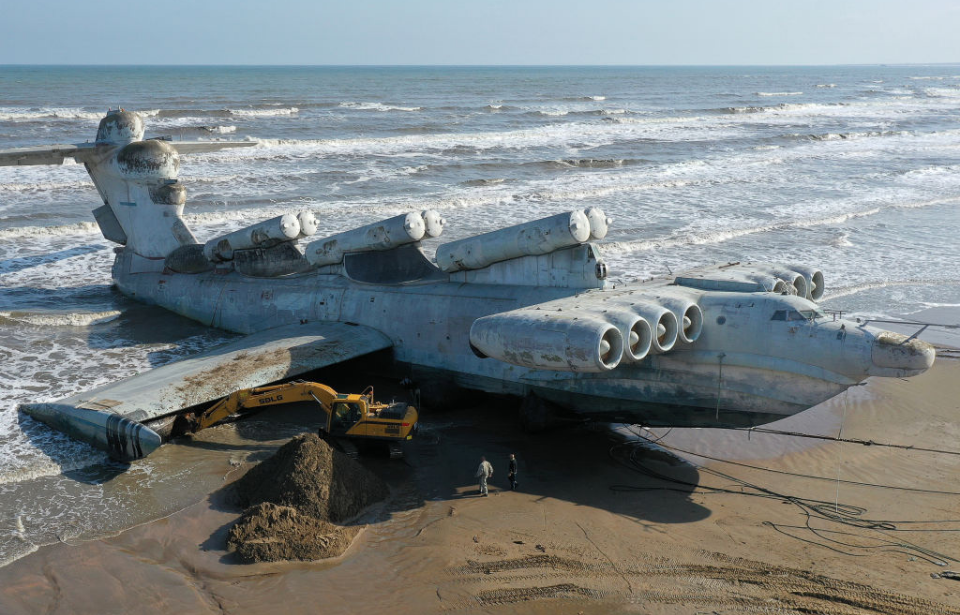Throughout history, many military vehicles have been built that showcase incredible innovation. Among these, the Lun-class MD-160 stands out as particularly amazing. Functioning as a Ground Effect Vehicle, this ekranoplan represents a unique blend of aircraft and ship. Its potential importance during the Cold War era is notable, although ultimately limited by the dissolution of the Soviet Union.
Is the MD-160 an airplane or a ship?
The ekranoplan was a form of Ground Effect Vehicle, meaning it glided over water without ever touching it. To many, it appears to be a hybrid between an airplane and a sea vessel. The International Maritime Organization (IMO) actually classifies it as a ship, despite the fact it flies above the surface of the water at a height of one-to-five meters.
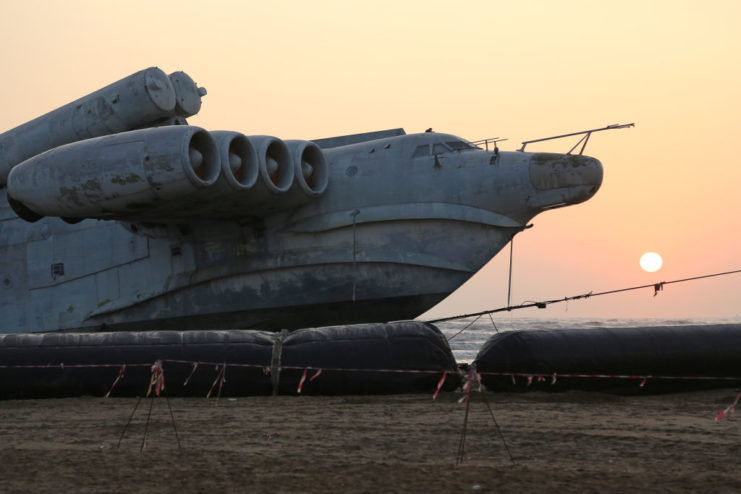
Ground Effect Vehicles are known for capitalizing on the aerodynamic phenomenon known as “ground effect,” which enables them to achieve high speeds by skimming over bodies of water. Their close proximity to the water often makes them hard to detect via radar, a quality that greatly appealed to the Soviet Union, given the advantageous blend of stealth and speed offered by this feature.
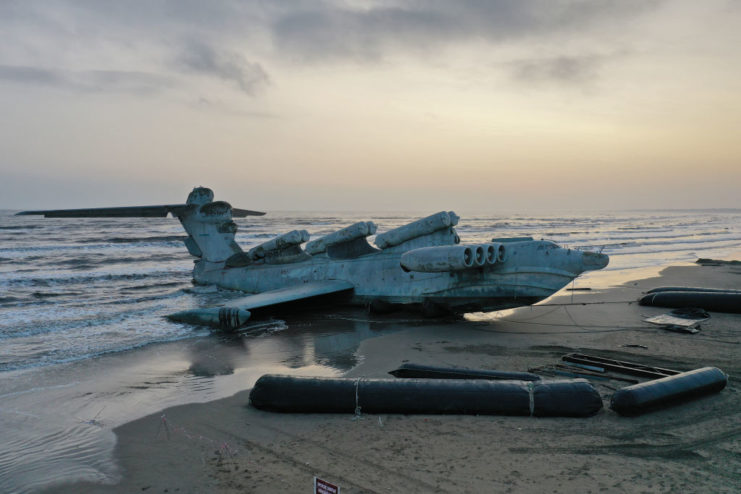
During the Cold War era, the Soviet Navy ran trials with different models of the ekranoplan, affectionately dubbed the “Caspian Sea Monster,” because of its operational use in the body of water separating the nation from Iran.
The Lun-Class MD-160
The Lun-class of ekranoplan was one of the last to be designed under the USSR’s Ground Effect Vehicle program. It was longer than an Airbus A380 Superjumbo airliner and nearly as tall, with a top speed of 550 kilometers per hour. This was due to its eight Kuznetsov NK-87 turbofans mounted on forward canards, each of which produced 127.4 kN of thrust.
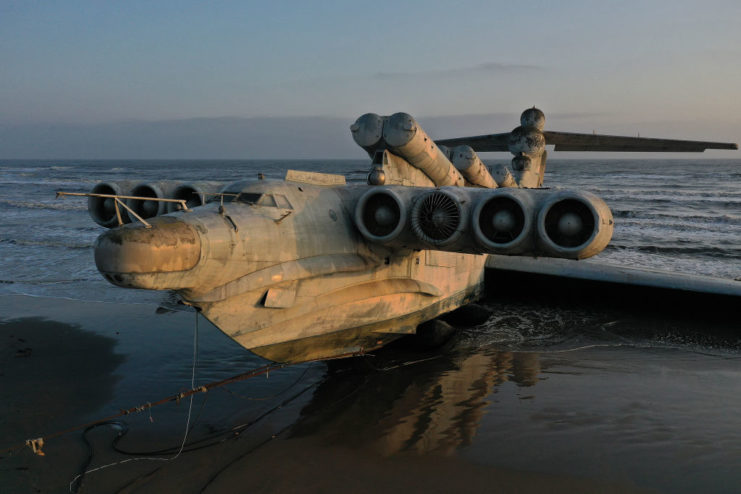
Able to takeoff and land in stormy conditions thanks to its flying boat hull, the intention was for it to conduct lightning seaborne attacks. It was equipped for anti-surface warfare, with six P-270 Moskit guided missiles held in launchers situated in pairs along the dorsal surface of the fuselage. It also had advanced tracking systems mounted to its nose and tail.
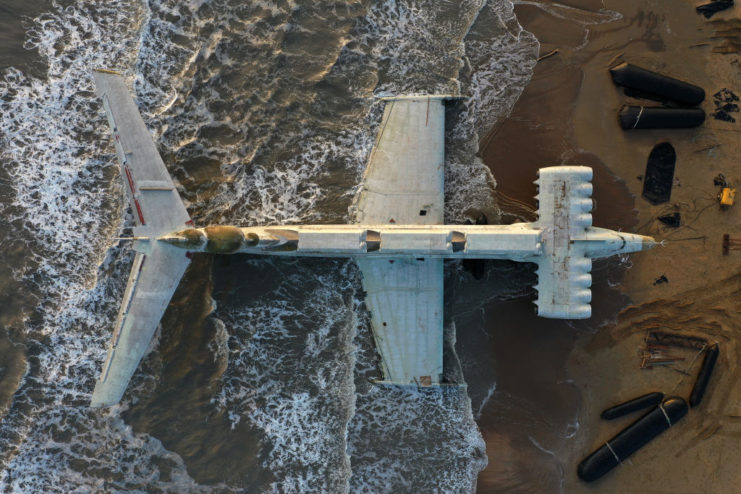
The first and only Lun-class ekranoplan to reach completion was the MD-160, which entered service with the Soviet Navy Caspian Flotilla in 1987. There was a second craft – unnamed and assigned to rescue and supply missions – that was abandoned in the early 1990s, following the cancellation of the program and the collapse of the Soviet Union. It was around this time that the MD-160 was also removed from service.
Future as a tourist attraction
The MD-160 was stored at Kaspiysk Naval Base, where it sat for over three decades. In July 2020, it was moved from the location to the ancient Russian city of Derbent, some 100 kilometers away. The plan was to make it the main attraction of “Patriot Park,” a yet-to-be-built military museum and theme park.
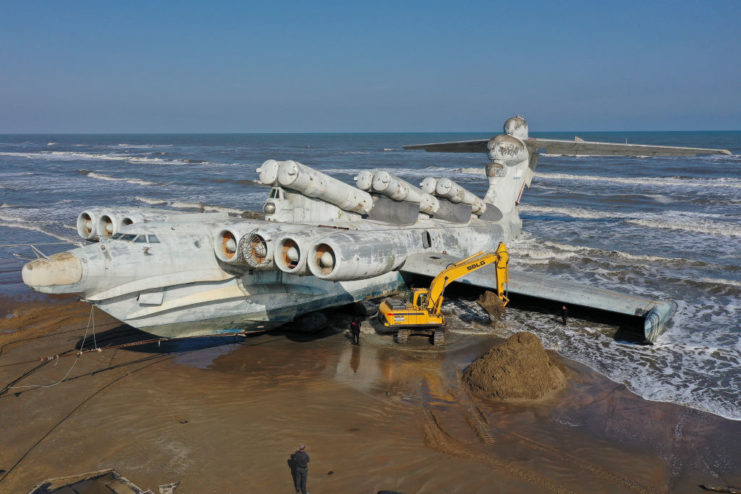
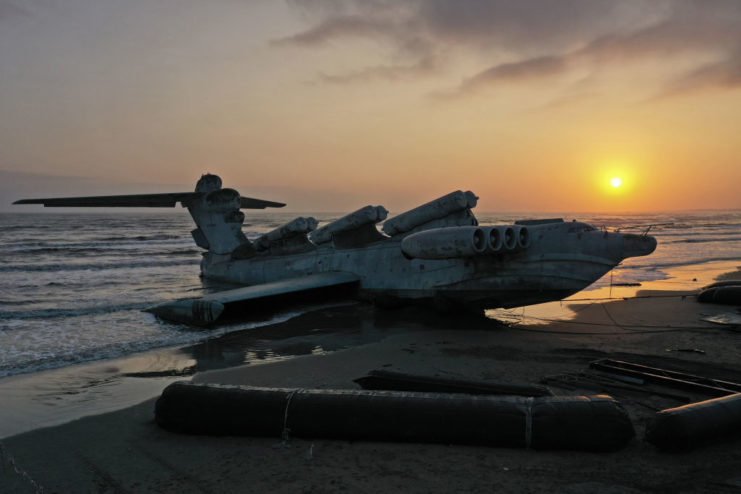
Are you a fan of all things ships and submarines? If so, subscribe to our Daily Warships newsletter!
The effort to move the craft took 14 hours and included the use of rubber pontoons, three tugs and two escort vessels, which slowly maneuvered it along the shore of the Caspian Sea. It is here that it’s remained, waiting for the museum to be built up around it.
